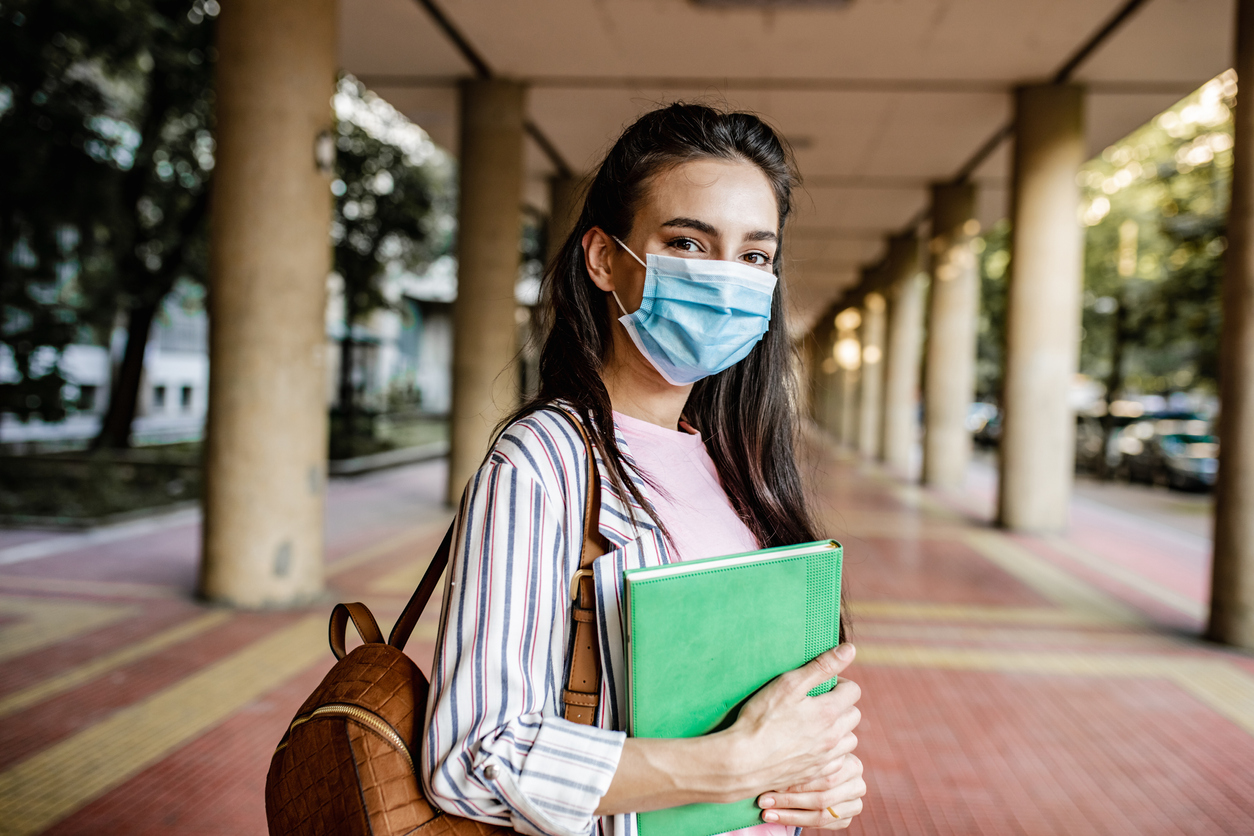
With the beginning of the school year upon us, educators face the question of whether or not to have in-person classes. For schools that do decide to reopen to in-person learning, extensive safety measures are in order. While it is impossible to reduce the risk of infection to zero, a proper reopening plan can drastically reduce the risk of COVID-19 transmission among students.
The CDC recently highlighted a few key aspects of a back to school plan that educators should push for and parents and students should be ready to comply with:
- Separation of students during instruction and while moving throughout the buildings or on campus
- Keeping students safe during extracurricular activities (cancel activities if social distancing is not a possibility)
- Consistent and proper use of PPE throughout the day
- Education of parents, students, and staff regarding personal protective practices
- Working with local health authorities to have a contact tracing plan at the ready in the event of a positive test for COVID-19
- Establishment of a frequent screening system to identify infected individuals (at home or on site)
While some of the above strategies are relatively self-explanatory and easy to implement, others require more creative solutions, or even collaboration with local health officials. Putting together a plan can be challenging, but there are three main initiatives that, if practiced, will reduce the possibility of transmission close to zero.
1. Keeping Appropriate Distance
This practice is the cornerstone of virus protection in all aspects of daily life, whether it’s a grocery store or a classroom. Maintaining proper physical distance, which experts agree is six (6) feet, requires creative solutions in most institutions, as space is limited. One common solution is using large rooms, such as gyms and auditoriums, to conduct class. The CDC also urges school systems to take instruction sessions outdoors where appropriate.
Another strategy that has recently become popular is cohorting (or podding). This is a strategy where a small group of students will only ever have contact with each other and their teacher. The system effectively limits the individuals that the cohort (group) is exposed to in a day, decreasing the risk of infected individuals infecting others.
On top of being spread out or practicing cohorting, the use of physical barriers is also recommended. Plexiglass dividers can effectively section off students and reduce the flow of air between them. These dividers are also highly recommended to protect security guards, front office employees, and other individuals in high-traffic areas.
2. Containing Respiratory Droplets
Since COVID-19 is transmitted in airborne droplets, it is essential that these droplets are contained and not floating through the air in a classroom environment. It is essential that all students and staff keep their mouth and nose covered at all times. Interestingly, adults are shown to expel these droplets farther than children, making it more likely that teachers will infect their students than the other way around. To learn more about the different types of masks and their applications, take a look at “Mask Effectiveness and Purpose by Type”.
3. Identifying Infected Individuals
This area is currently under debate, as some educators believe that checking one’s own temperature before arriving at school is enough, while some are pushing for temperature screening upon arrival. Temperature screening onsite is obviously the more thorough approach, if possible, because the self-screening method operates on the honors system, and there will always be those who forget to take their temperature in the morning.
Temperatures can be taken at the door with either a simple thermometer, a no-contact thermometer, or a mass thermal screening system. New thermal imaging systems allow for the accurate display of multiple heat signatures over twenty feet away. These systems can be integrated into the main lobby of a school building, allowing for contactless monitoring of crowds as they enter.
Read our post on thermal imaging systems: “First Steps to Reopening: Thermal Imaging”.
Sources:
Preparing K-12 School Administrators for a Safe Return to School in Fall 2020. (n.d.). Retrieved August 21, 2020, from https://www.cdc.gov/coronavirus/2019-ncov/community/schools-childcare/prepare-safe-return.html
Kamenetz, A., Neighmond, P., Greenhalgh, J., Aubrey, A., & Wroth, C. (2020, August 06). How Safe Is Your School's Reopening Plan? Here's What To Look For. Retrieved August 21, 2020, from https://www.npr.org/sections/health-shots/2020/08/06/897295450/how-safe-is-your-schools-reopening-plan-here-s-what-to-look-for
Owen Takac is the summer Sales Intern at Pocket Nurse.







